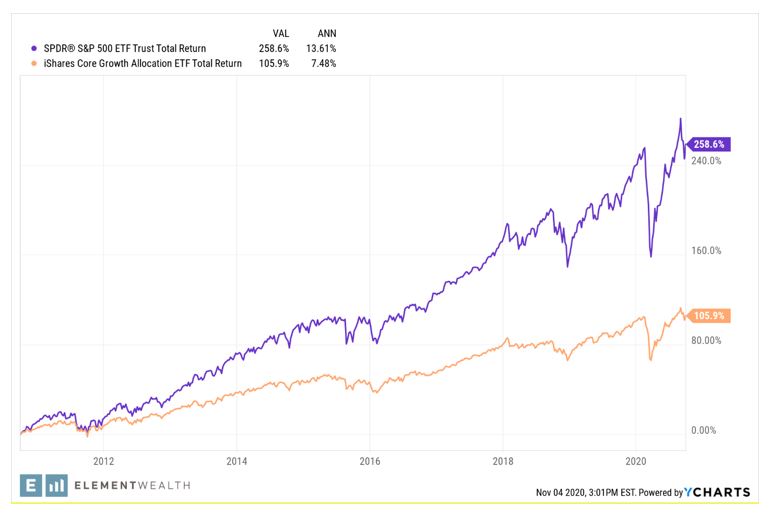A balanced portfolio is an investment portfolio consisting of approximately 60 percent equities or stocks and 40% fixed-income or bonds. This has been and continues to be a popular portfolio for many different types of investors, but it is mostly geared towards those that are nearing retirement or already in their retirement years. Since it has a mix of both stocks and bonds, it gets a portion of the market returns without all the downward volatility of being fully exposed to stocks.
I have heard numerous industry sources predict significantly less average returns over the next 10 years compared to past average returns. Morgan Stanley forecasts a 2.8% average annual return over the next 10 years for a 60/40 portfolio. The average has been nearly 8.0% since 1881 and about 6% over the last 20 years, after double-digit annual returns reaching as high as 16% from the early 1980s to the early 2000s. Bob Rice, the chief investment strategist for Tangent Capital, predicted that a 60/40 portfolio was only projected to grow by a rate of 2.2% per year in the coming years.
Some of the reasons cited for potentially lower returns are:
- High equity valuations
- Monetary policy
- Increased risk in bond funds
- Low commodity market prices
According to multiple sources, investors should brace for a reversion to the mean in stock market returns since the past 10-year bull market has produced gains well above historical averages. This chart compares the S&P 500 ETF with the IShare Core Growth Allocation ETF portfolio (60/40).

One of the names you may be familiar with in our industry is the Nobel Laureate economist at Yale University, Robert Shiller. He created the CAPE ratio or the Shiller P/E ratio, which is a valuation measure that uses real earnings per share over a 10-year period to smooth out fluctuations in corporate profits. Another economist, Stephen Jones, using the Shiller ratio, predicted the average annual real total return for the S&P 500 will be 2.6% over the next 10 years. Take note that this is a 100% stock portfolio prediction.
On the other hand, Shiller’s critics, such as Rob Arnott of Research Associates, offer reasons why the results should be on the uptrend, including the maturation of the U.S. economy and more stringent financial reporting standards.
Whenever people start making predictions, which always happens in our industry around the end of the year, I think about one of baseball’s all-time greats, Yogi Berra. One of his famous quotes is, “It’s tough to make predictions, especially about the future.” Truer words have never been spoken.
We have been utilizing a few alternative investment solutions and are considering others for possibilities as we prepare for an even more challenging investment environment. Here are a few alternatives that may help to increase returns over a more traditionally invested portfolio:
- Private equity
- Venture capital
- Hedge funds
- Real estate
- Commodities
- Managed futures
- Precious metals
- Cryptocurrency
- Tax liens
Some of these may be a good addition to your portfolio, but each comes with a cost, usually more than traditional investments, and a varying degree of risk. Within each of these alternatives, there may be numerous sub-categories and management styles that should be considered within the context of the overall portfolio mix. Generally, industry professionals usually recommend a small percentage of the total investments.
Some of these alternative ideas may be appropriate for your portfolio. If you would like to have a more comprehensive discussion about portfolio diversification, please feel free to reach out to us via email or telephone.

